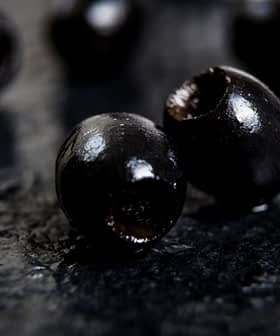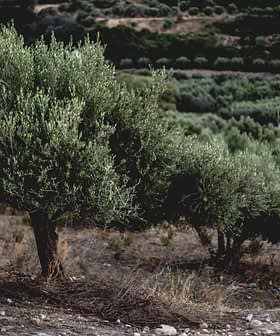A project in Spain has successfully transformed olive waste into activated carbon with diverse applications.
At the end of its research period, the CARBON+ project, a joint public-private enterprise, has demonstrated the product’s efficiency as a supercapacitor material, its effectiveness in wastewater treatment and its aid in extending the lifespan of brine in olive processing.
These results underline the potential of activated carbons in various applications, which will contribute to the study of the economic feasibility of scaling up the process to an industrial level.
Launched in 2022 within the strategic projects program in cooperation with the Valencian Innovation Agency of the Valencian Community’s regional government and co-financed by the European Union, the project was undertaken by Greene Enterprise, Aceitunas Serpis, the University of Alicante and Aitex.
The work was carried out at Greene’s pilot plant in the Elche industrial park using olive processing residue supplied by Serpis, a table olive producer. The residue is mostly comprised of olive pits and brine, the olive sector’s primary waste products, obtained after processing Manzanilla and Hojiblanca table olives.
See Also:Researchers Transform Olive Grove Waste Into BioplasticDespite extensive research in recent years into applying the principles of the circular economy to the table olive and olive oil industries, the vast majority of waste is still deposited in landfills.
The end objective of the CARBON+ project was to use pyrolysis to transform these waste materials into high-quality activated carbon via an economically viable industrial process.
This was achieved, and activated carbon with a specific surface area of 1,440 square meters per gram was produced. Since one of activated carbon’s most useful qualities is its adsorption capacity (the adhesion of atoms, ions or molecules from a gas, liquid or dissolved solid to a surface), the greater the surface area, the more effective the carbon in such applications.
In addition to successfully developing this process, three main industrial applications were investigated to evaluate the activated carbon’s potential end value.
The first leverages the product’s high adsorption to eliminate suspended organic matter and phenolic compounds dissolved in used olive fermentation brine.
This allows the brine to be reused directly within the olive processing industry, thus reducing waste and associated costs. The project’s activated carbon was more effective in this capacity than commercial alternatives, removing a higher polyphenol content due to its greater porosity.
In a related application, activated carbon was shown to be effective at removing odors in wastewater treatment. This was demonstrated by testing the product against fermentation brine, textile wastewater and standard urban wastewater from an active treatment plant.
See Also:Bricks Made with Olive Pits Reduce Carbon Footprint of Buildings, Study FindsFinally, the activated carbon obtained was assessed for its potential use in supercapacitors for energy storage. In recent years, there has been renewed interest in using activated carbons in energy storage, and they remain a strong candidate in the search for porous materials that may enable the hydrogen economy.
Carbon-based supercapacitors comprise two porous carbon electrodes with a large specific surface area immersed in an electrolyte and separated by a membrane.
The energy storage is entirely electrostatic and, therefore, harmless to the integrity and stability of the electrodes. This allows the supercapacitor to perform up to 100,000 charge-discharge cycles with an electrolyte deterioration rate of under 10 percent, which makes such energy storage highly desirable in applications such as electric vehicles.
It was demonstrated that electrodes made from the project’s material performed comparable to those constructed with commercial activated carbon, performing slightly lower.
Electrochemical performance improved after washing the activated carbon with hydrochloric acid and modifying its surface chemistry through thermal treatment. The researchers concluded that the performance achieved at this stage was sufficiently high to warrant further research and development.
This conclusion was also drawn concerning the project as a whole, with Greene stating: “In short, these results underline the potential of activated carbons in various applications, which will contribute to the study of the economic feasibility of scaling up the process to an industrial level by both companies.”








